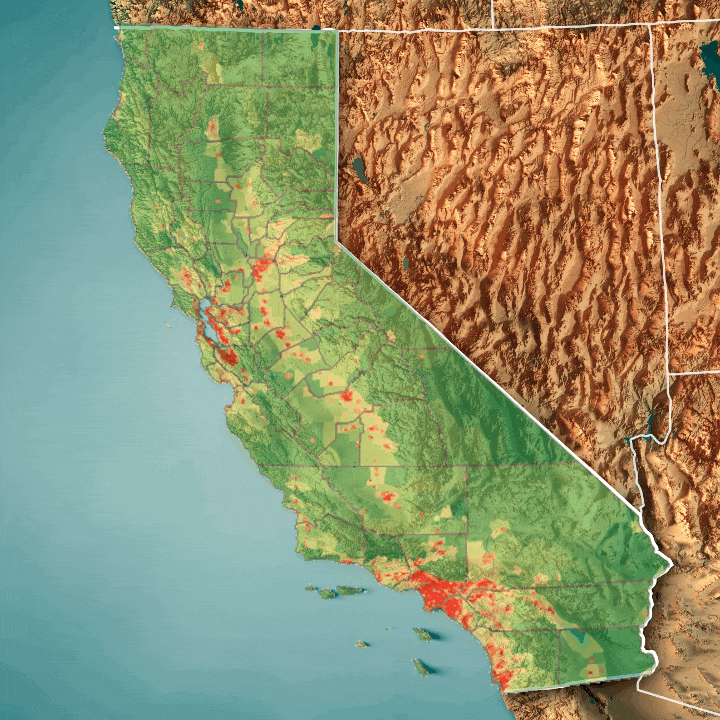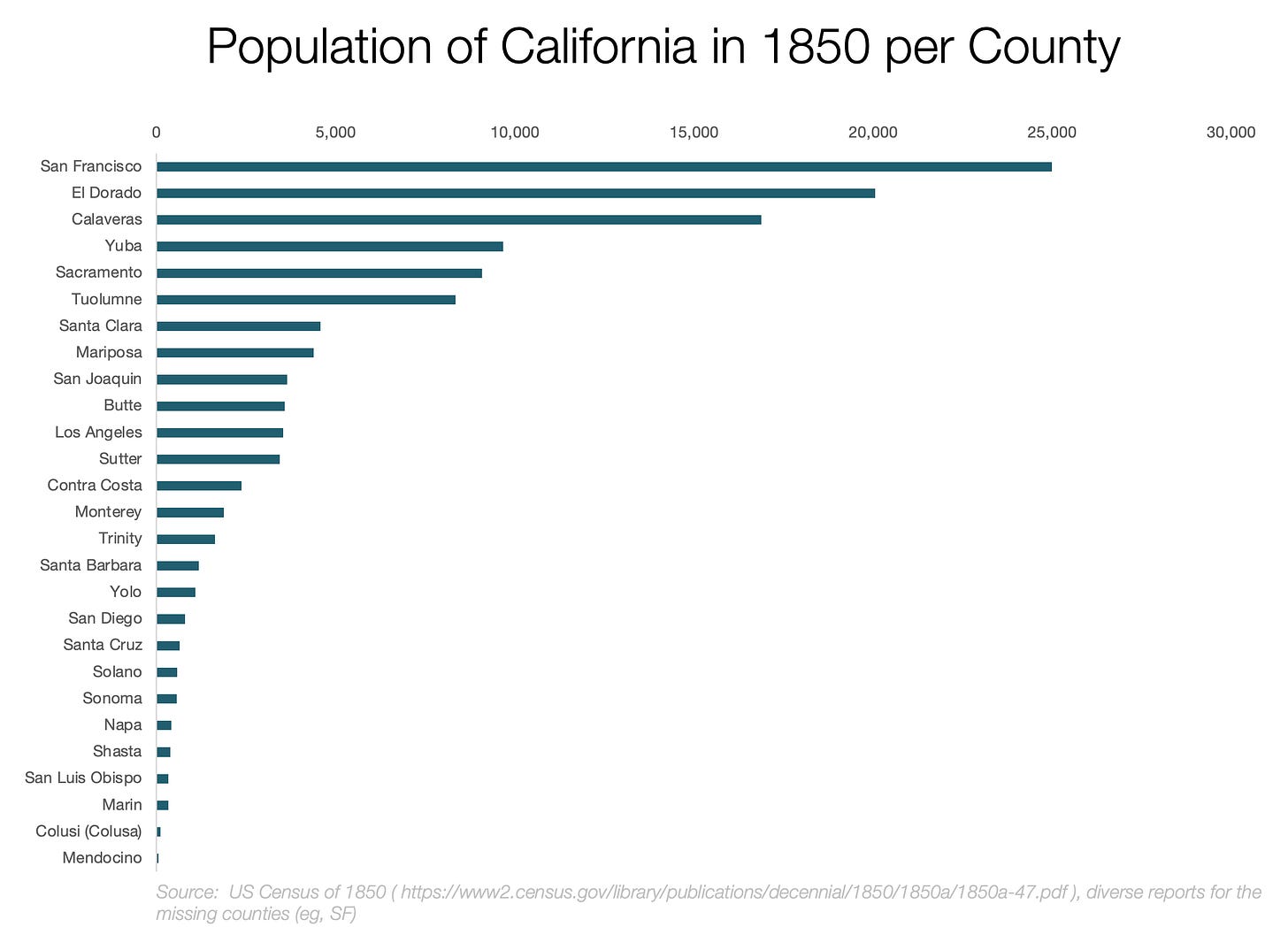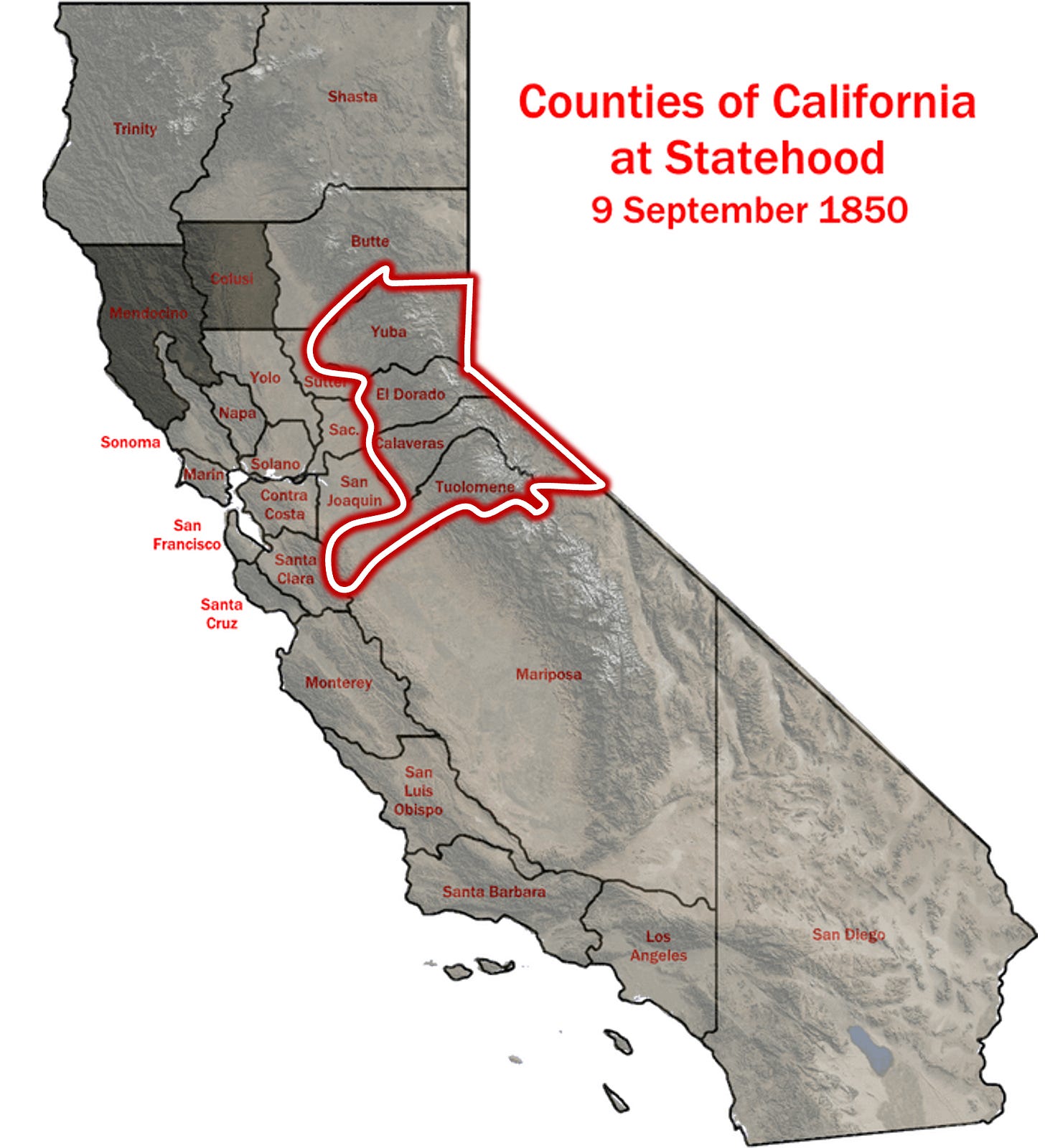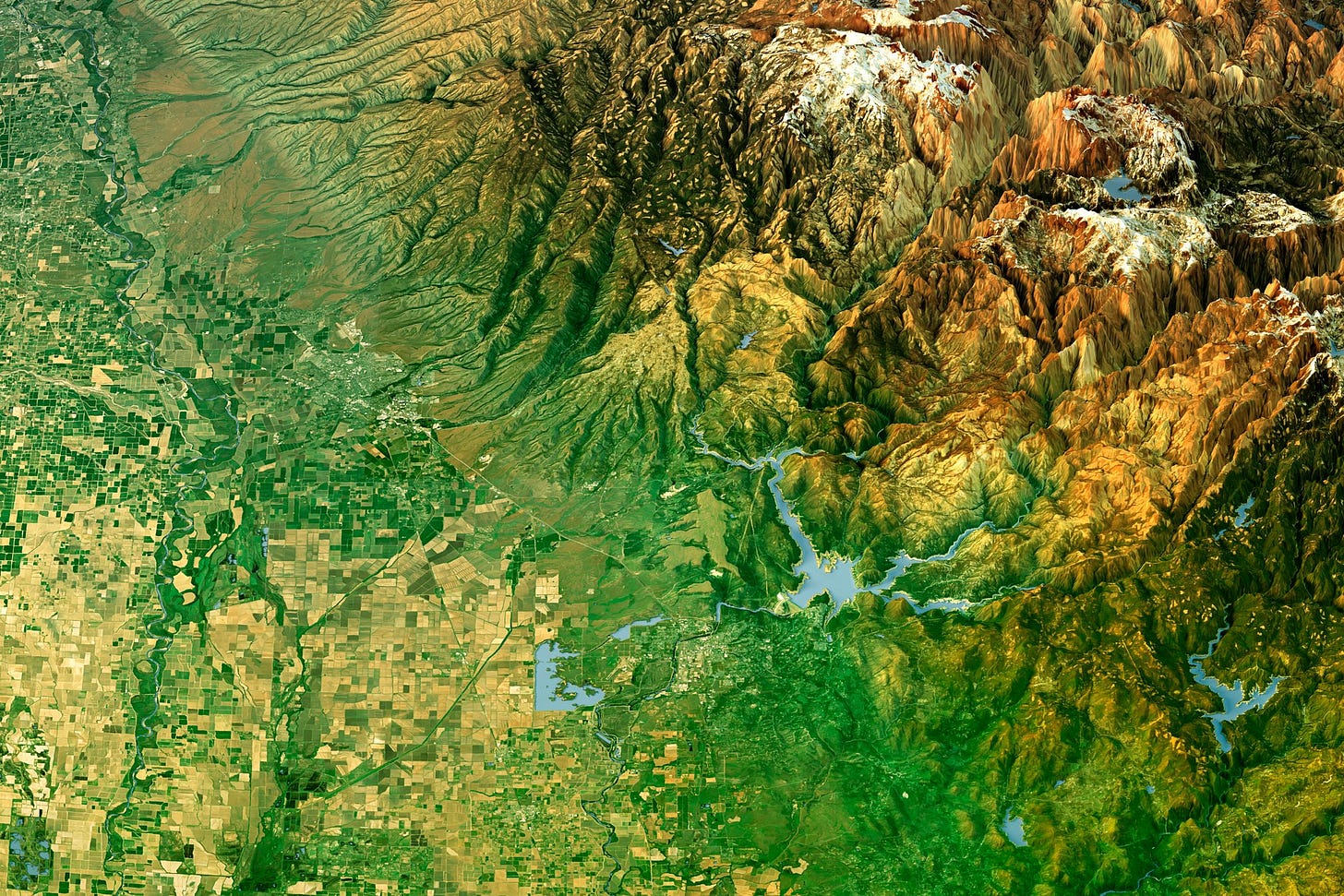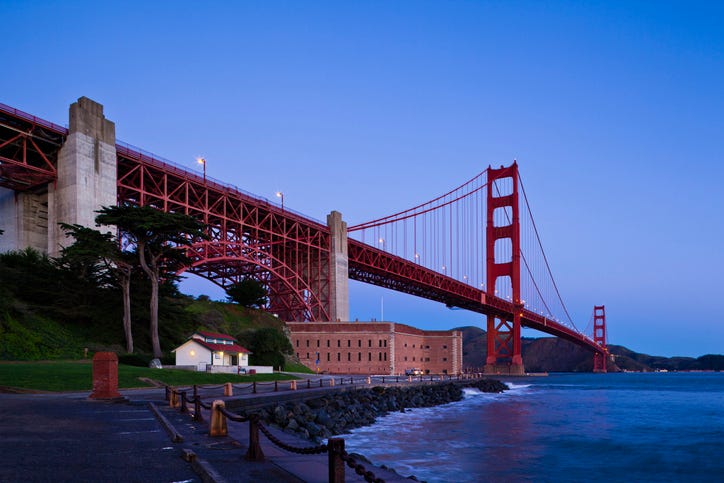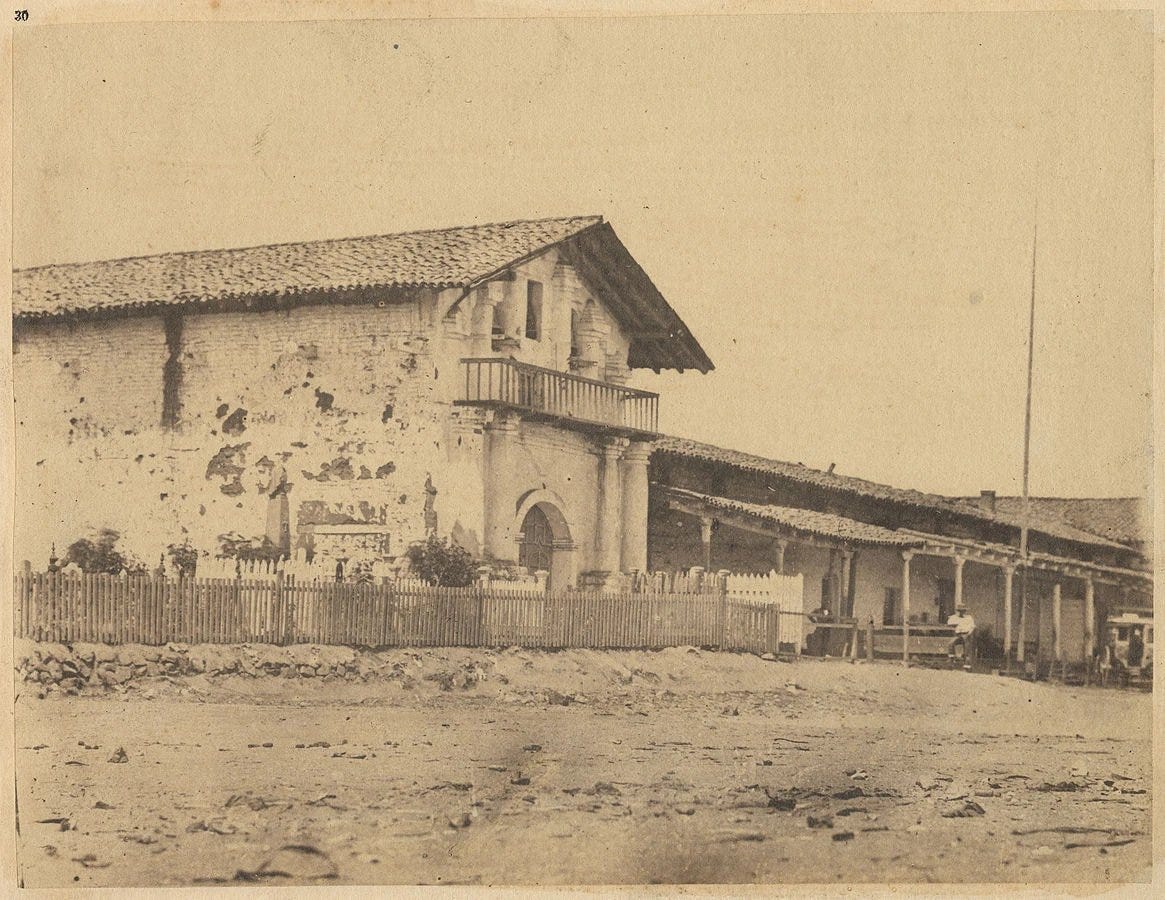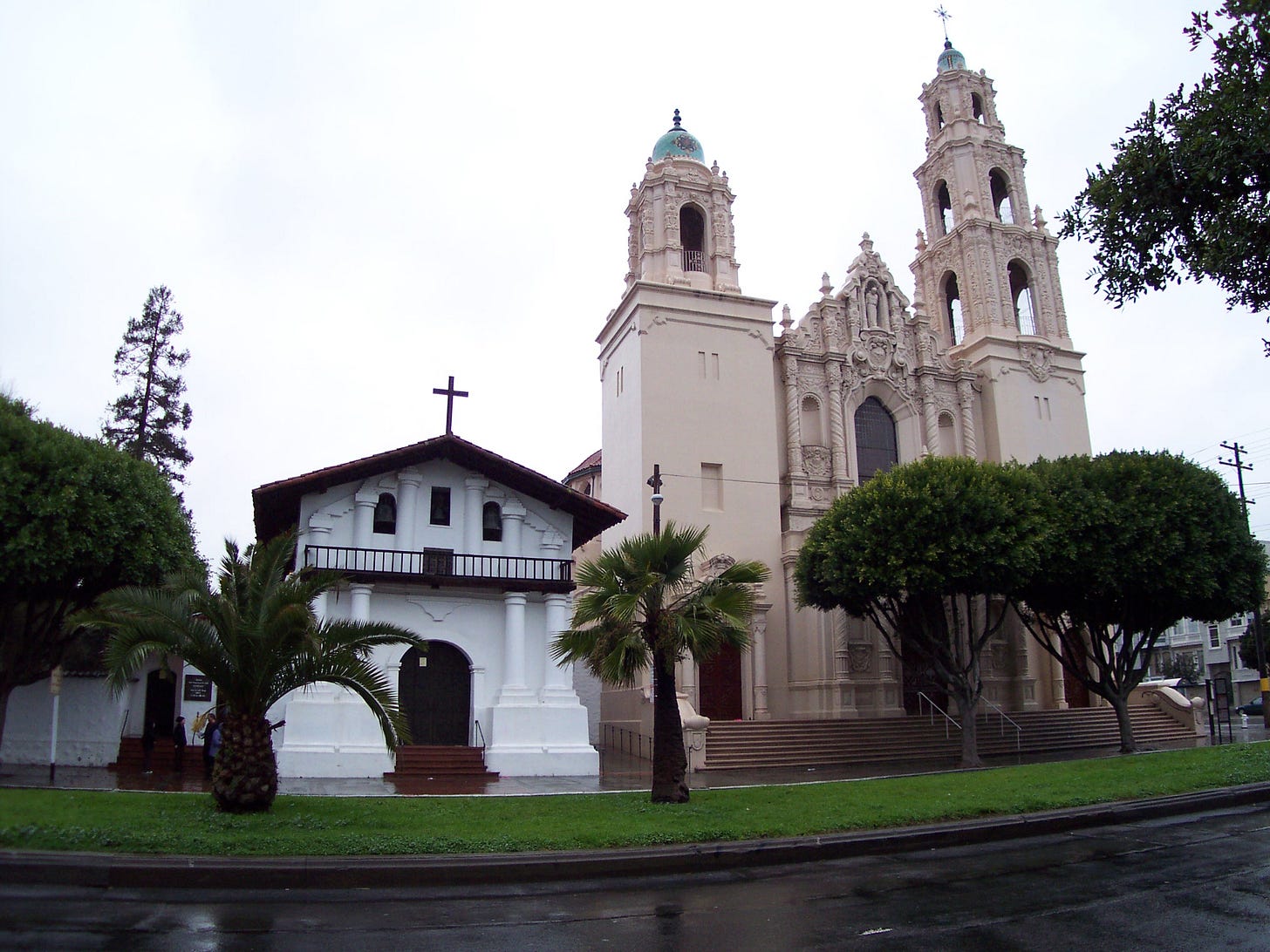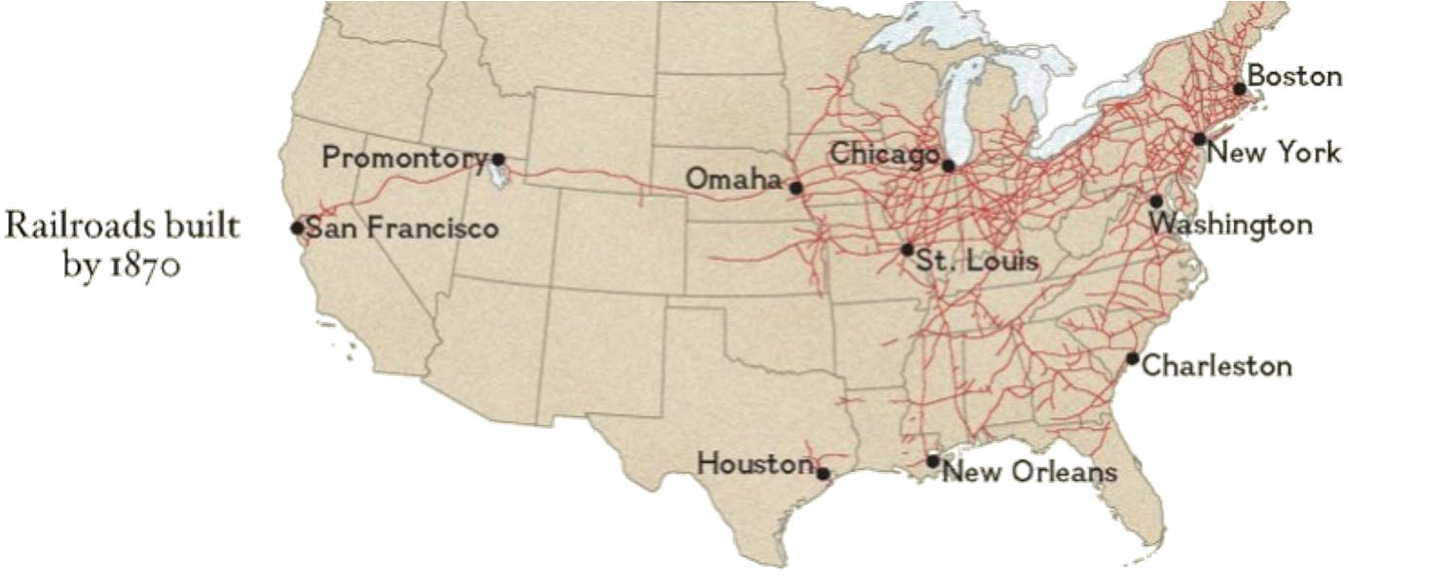🌎 Why Is California the Way It Is?
San Francisco, Los Angeles, Sacramento, and the Central Valley
This is California:
The three most populated regions in California are the Los Angeles metropolitan area, the San Francisco Bay Area, and the Central Valley.
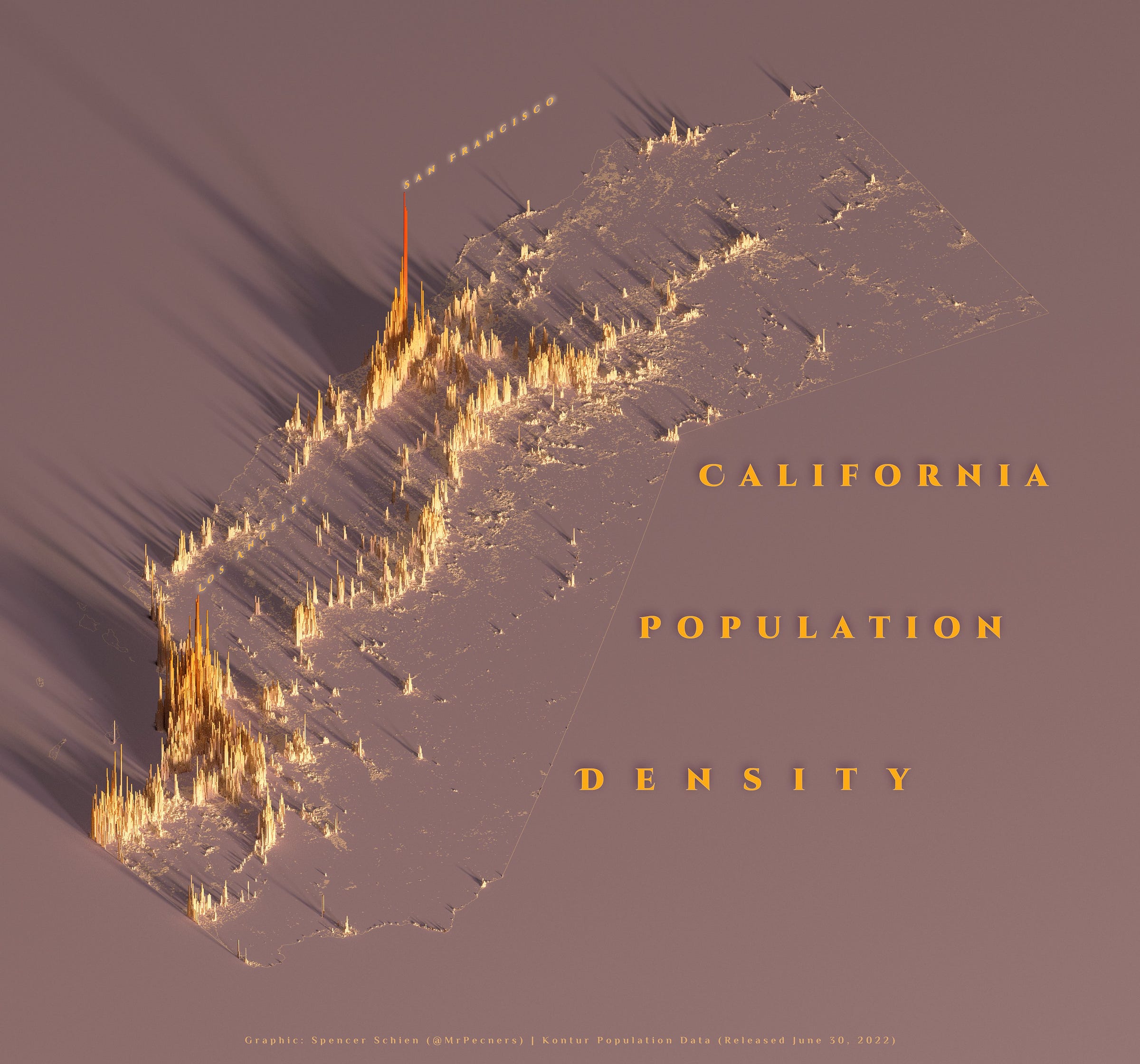
Why? What has caused this concentration?
If you think about it, California’s cities appear to defy some of the logic we’ve outlined in Uncharted Territories:
The capital is only the 4th population center after Los Angeles (LA), the San Francisco Bay Area (SF), and San Diego (SD). Why?
San Francisco is at the tip of a mountainous, cloudy peninsula, overseeing a bay that was not even discovered by the Spaniards until the 1700s. There are much better spots for a regional capital on that bay. Why did SF become the center of the Bay Area?
LA has the biggest metropolitan population, but doesn’t have a big river or a natural, protected, deep water port. And it got a railroad connection to the rest of the state much later. Why?
Let’s tackle these questions in order.
Why Is Sacramento the Capital?
This is the population per county in California in 1850. What do you notice?
You might never have heard of El Dorado, Calaveras, Yuba, or Tuolumne. So why were they 4 of the 6 most populous counties in California? Where are they, actually?
Half of the Californian population lived in these mountains. You guessed it, that’s due to the Gold Rush.
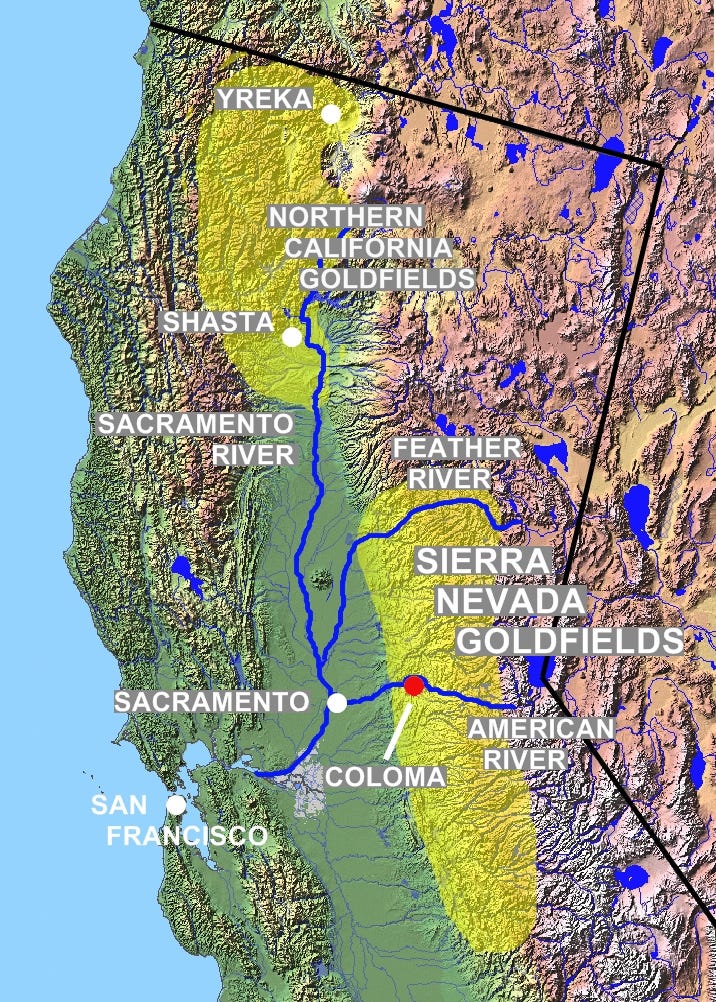
The first gold was discovered at Sutter’s Mill, in Coloma. Why there? Because it was at the base of the mountains. Logs could be floated down there.
And why was Sutter’s Mill on the American River? Because John Sutter had established a settlement at the confluence of the Sacramento and American Rivers.
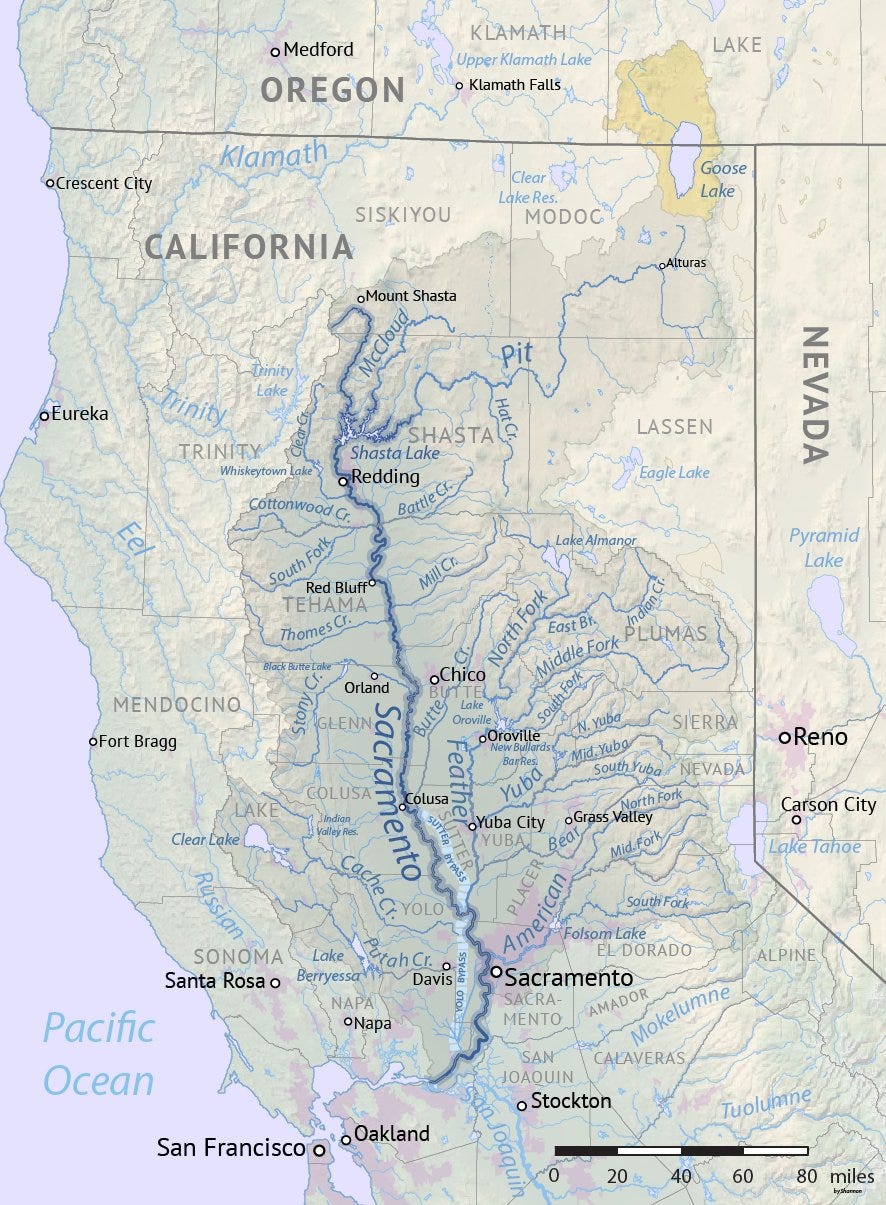
As the Gold Rush progressed, Sacramento became the main city in the region, allowing gold to be traded outward, and other goods to reach the region via the ocean and the Sacramento River. In other words, Sacramento was the main trading port for the California mountains with the world.
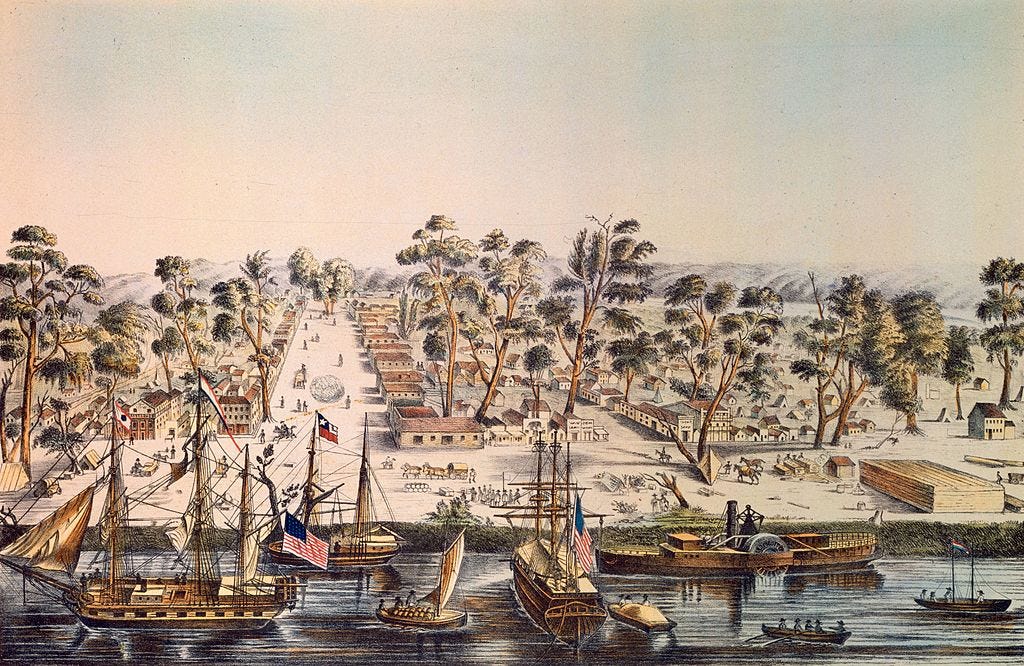
And since the mountains were the early economic capital of the state, Sacramento was the most important city.

This is why in 1854, just five years after the Gold Rush started, Sacramento was chosen as the capital of the state. The region had recently been acquired by the US after the Mexican-American war, was just constituted as a state, tried several cities for capital, and ended up settling at the heart of the state at the time.
How Did the San Francisco Bay Area Emerge as the 2nd Biggest in California?
However, Sacramento was not the biggest city in the state at the time. It was San Francisco.
In 1849 San Francisco had approximately 1,000 inhabitants; by 1856 the population had soared to 50,000.—Source
That a city of the respectability of our San Francisco, could be raised in the short space of five or six years, appears incredible.—The Golden Era, 1856
But why is this spot in the Bay Area the one that won over all others?
San Francisco does have some benefits:
Close to the ocean
Yet protected from it, inside the bay
Close to the Sacramento River, and thus Sacramento and the gold region
Navigation is possible from San Francisco to Sacramento
But many other spots in the Bay Area have such advantages.
And many of these areas don’t have some of San Francisco’s issues. For example, Oakland is flatter and less foggy. So why San Francisco?
It had a historic advantage: Before it was San Francisco, it was a Spanish settlement called Yerba Buena.
The Spaniards discovered the Bay Area in the late 1700s—they had missed it before because the entrance to the bay was always covered in fog!
But after they did (it was discovered first overland), they recognized immediately its value—for defense. Such a big bay with such a narrow, mountainous opening could easily be protected. That’s why they established El Presidio Real de San Francisco—or The Royal Fortress of Saint Francis in 1776.
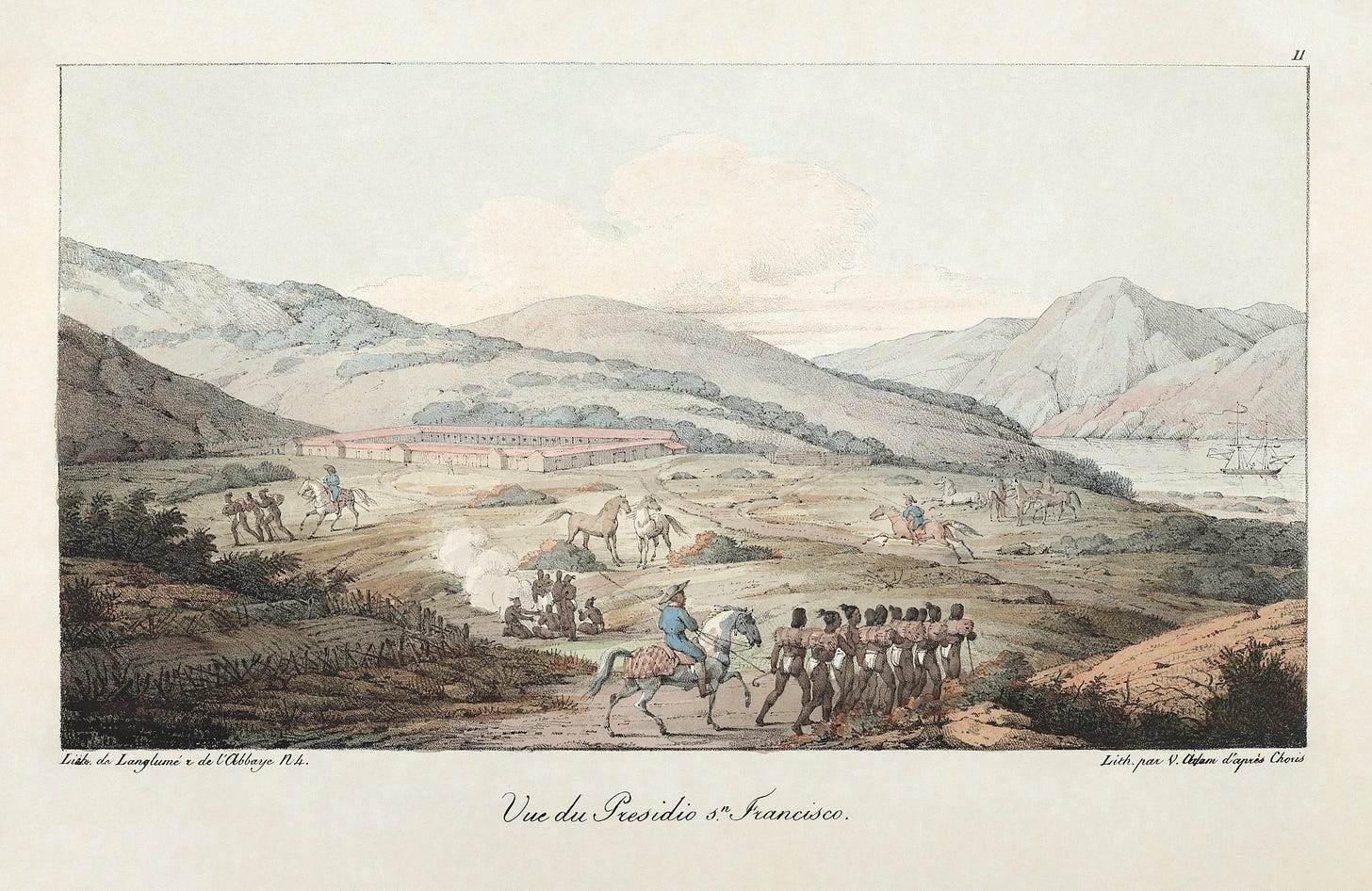
That is San Francisco’s Presidio today:
The Spaniards established Mission Dolores the same year.
This is the Mission today:
The Yerba Buena settlement grew out of the needs of the military Presidio and religious Mission Dolores.
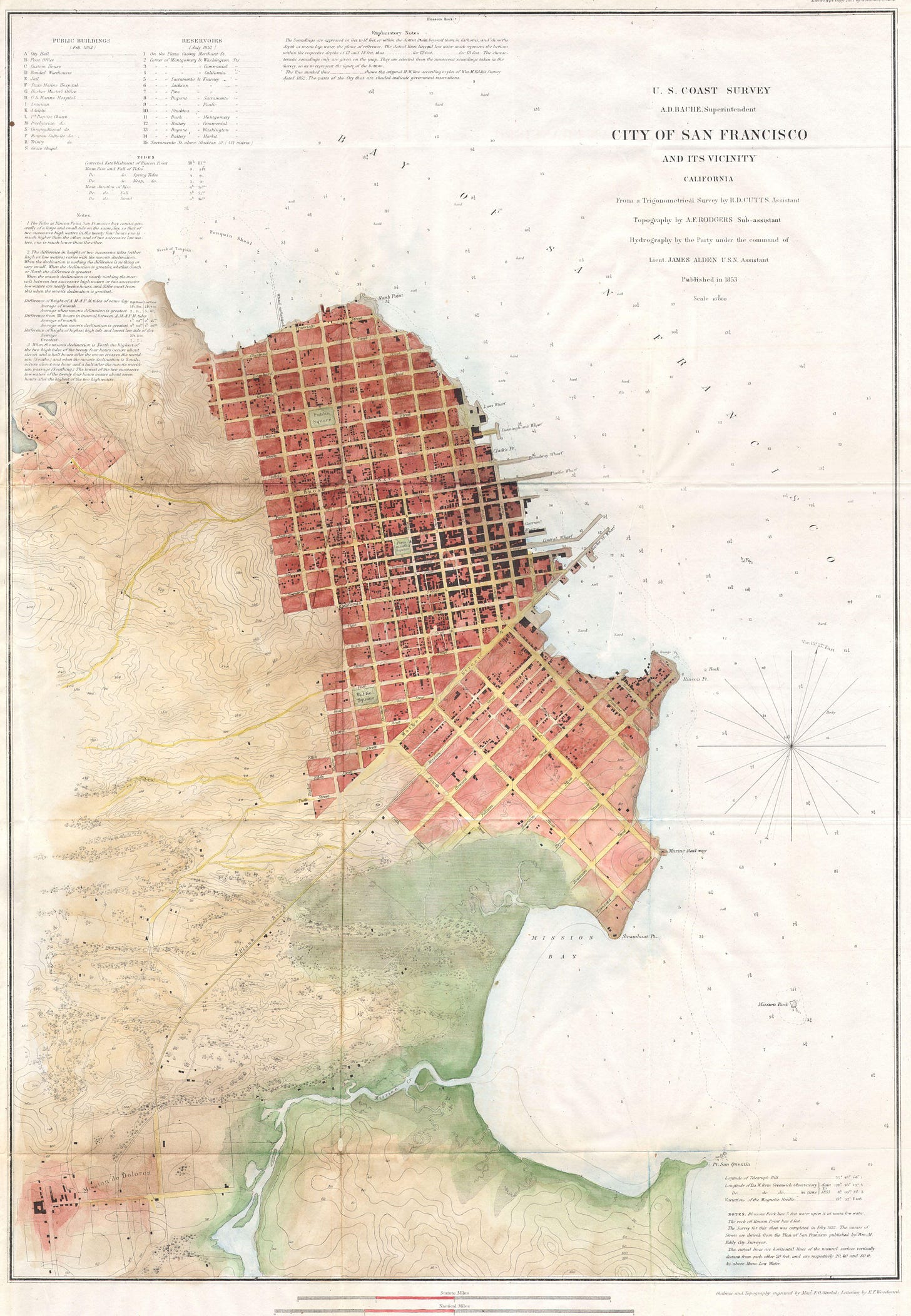
By the time the Gold Rush happened, it was by far the biggest city on the Bay.
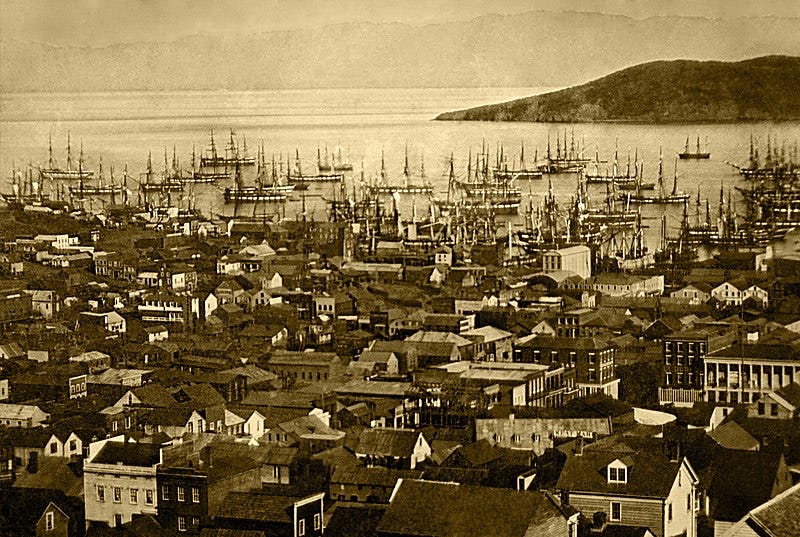
As a result, that’s where all the sea ships anchored. They couldn’t travel all the way to Sacramento because the river was not navigable for seafaring ships. They had to stop and transfer their cargo to smaller ships.
In other words, despite its mountains, cold, and fog, San Francisco had the perfect geography to become the biggest city in the Bay Area:
I has a perfect deep water port
It’s protected from the sea weather
It can be protected from invasions
Connected to the Sacramento and San Joaquin rivers, it’s the perfect hub to connect the Central Valley with the world
It was the closest to the ocean, so it was the most convenient spot for an early settlement
That early advantage was enough to beat other locations around the Bay Area to become the prime city in the region.
Thanks to this amazing position, SF later received the first transcontinental railroad. It wasn’t meant to go primarily to SF; only Sacramento. But since SF was the port on the sea, it made sense to just extend the railroad there.
Thanks to that, San Francisco became the perfect hub to connect the Central Valley and the rest of the USA to the ocean
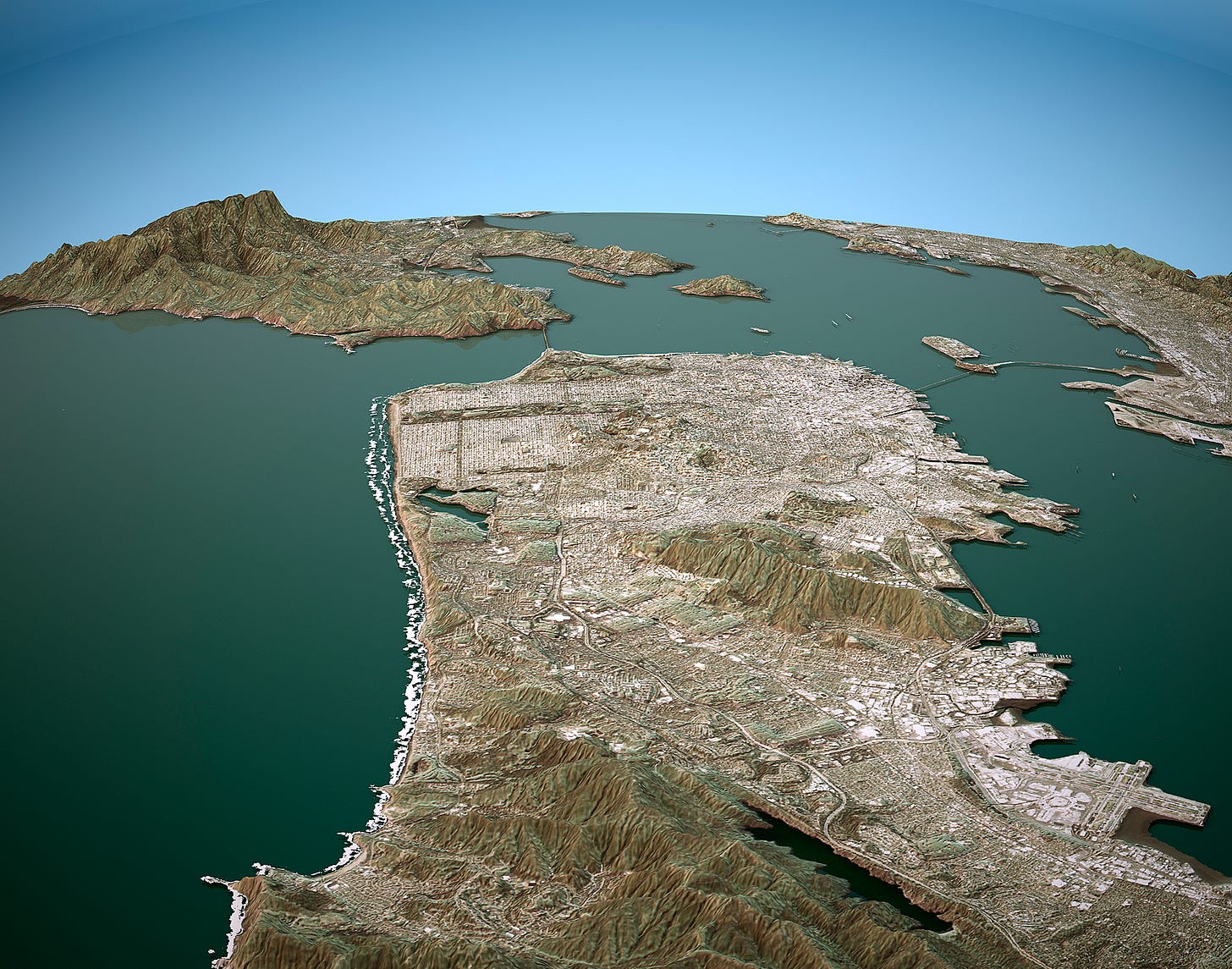
However, San Francisco’s downsides are clear, with its hills, its peninsula, and its fog. Meanwhile, the South Bay is flat, warm, and broad. Over time, as more and more of the Bay Area was built out, this became a huge advantage, and today the city of San Jose is bigger than San Francisco.
Why the Central Valley?
A simple look tells you what you need to know:
Sunny
With an old massive lake that flattened it for eons
Irrigated by all the rivers coming from the mountains
Which brought silts from their floods
Perfect for agriculture.
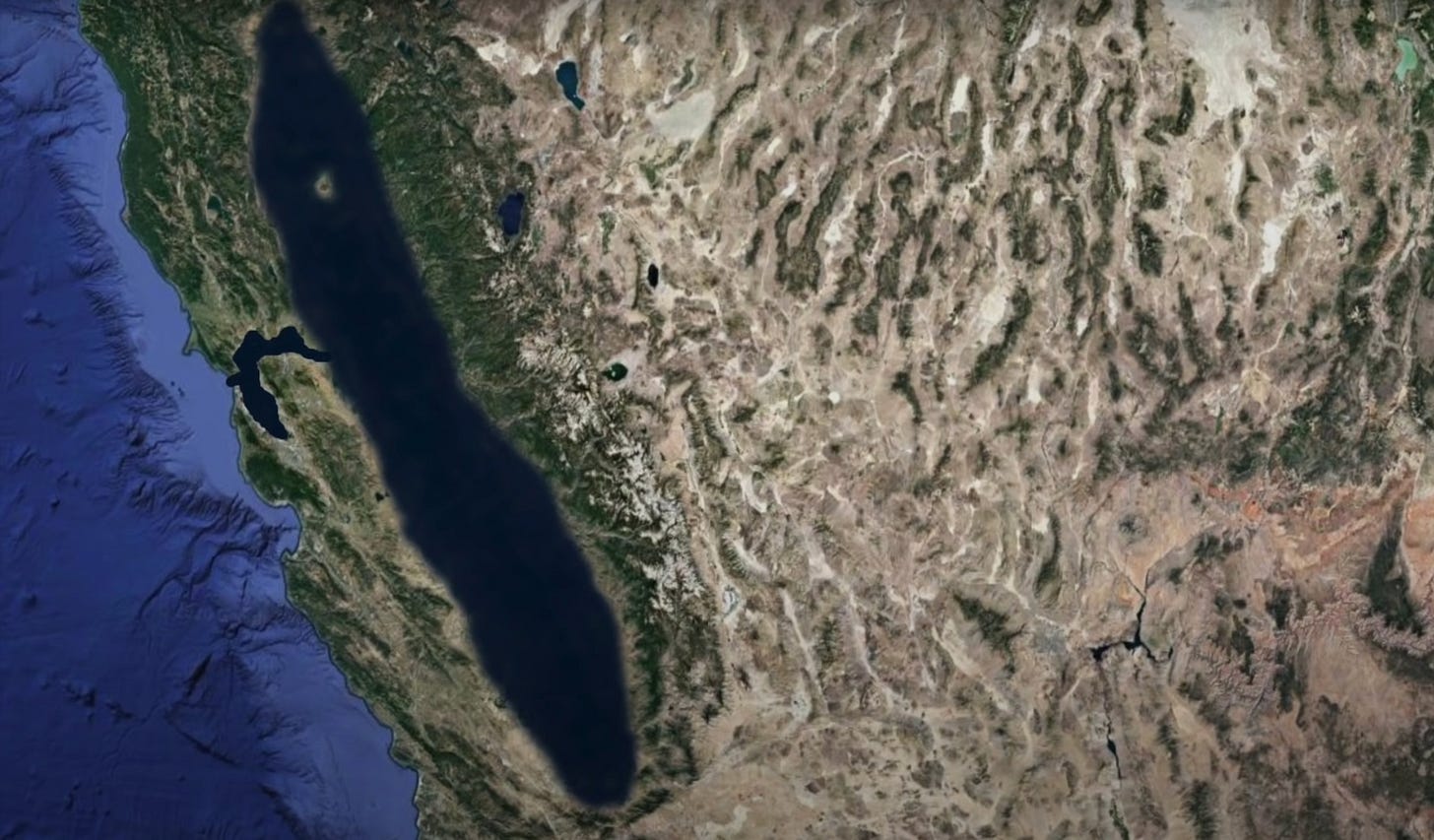
And that has made it a breadbasket of the world.
So this is why California is a bit weird:
The Central Valley was a sea close to the mountains. This has made it very flat, and well irrigated by the water from the mountains—perfect for agriculture.
It turns out it also has mountains, which usually have valuable minerals. These mountains have the most valuable one gold at the time—gold—which justified a rush for it in the 19th century.
The city that took advantage of it was Sacramento, positioned just at the confluence of navigable rivers in the Central Valley, with good access to the gold.
But like Pittsburgh, once the gold ran out, its existence was less justified. It lost population compared to other cities.
If it hadn’t retained the government from that time, odds are it would be much smaller.
San Francisco, meanwhile, is perfectly positioned as the gateway for the Central Valley to the rest of the world.
That position made it into the main transportation hub of the West Coast with the rest of the US, a position it has enjoyed to this day.
We’re now ready for the final question (premium):
Why Is Los Angeles the Biggest Metropolis in California?
Keep reading with a 7-day free trial
Subscribe to Uncharted Territories to keep reading this post and get 7 days of free access to the full post archives.



